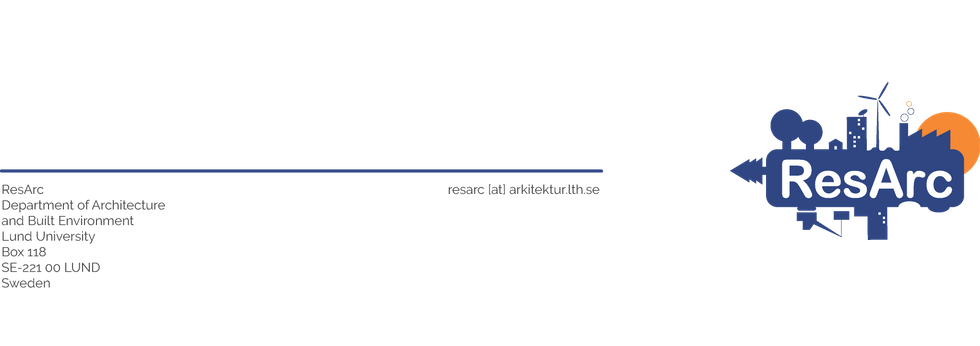Swedish Research School in Architecture
Tendencies - Temporality, the impact of time in architecture and urban planning
November 2014 - February 2015
Temporality has become a major trend in the social sciences as well as in urban and architectural research. The trend does not have a simple origin but have materialized from theory as well as practice during the early 2000s: from the translation of Lefebvré’s Rhythmanalysis into English, to the legislation of Urban time plans in Italy through the so called Turco act. In architecture and urbanism, the quickly increasing number of temporary use projects in architectural practice (mapped in publications such as Urban Catalyst, Spatial Agency and The Temporary City) and the rising importance of urban cultural events are other points in the case.
In this course we address temporality as a theme of research, both from a theoretical and a methodological perspective. Temporality and time are studied through key concepts of urban and architectural research such as materiality, space and visibility. The course is focused on investigating what a temporal perspective on architecture/urbanity could be, and takes a wide and interdisciplinary approach in this efforts ranging from philosophy and sociology, through human geography to architectural and urban design. This means that concepts such as “occasion”, “duration”, “diachrony”, “synchrony”, “timing”, “chronology”, “protention” and “retention” will be addressed and discussed in relation to issues of relevance in architectural theory.
Invited international researchers: Teresa Stoppani, Albena Yaneva and Andrea Mubi Brighenti.
The course is held in November and December 2014, with an optional part in early 2015.
In Temporality part 2 (2,5 hec) we adress the notion of temporality through the participants' own paper presentations. It is a requirement for participation that you participated and delivered a preliminary paper in the first part of the course.
The course will discuss the publication-ready format as a research approach from a theoretical as well as a methodological perspective. A main interest will be given to how any temporal perspective informs the text. Other common research questions will be discussed, such as: Is the researcher position given by the paper? Do the questions raised address the problem stated? If it is an experimental format, how is the reader/research community/public addressed? How does the text relate to the publication format?
The main assignment of the course is to write a paper of 4000-10000 words, including a specifically stated publication aimed at. The publication could be an existing Journal (please name it), or it could be a chapter of a dissertation or an anthology of some form (please describe it), etc. As a participant, and as part of the assignment, you will also be an opponent to another participant's paper.
Registration for the course is made by emailing to Mattias Kärrholm (mattias.karrholm [at] arkitektur.lth.se) or Gunnar Sandin (gunnar.sandin [at] arkitektur.lth.se), no later than 20 January 2015.

